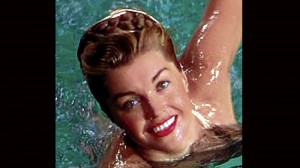THERE are different styles of acting—for stage and for films. Stage acting demands portrayals that are bigger, louder and larger than life. In the movies, the rule is, “Less is more.” Old flicks chronicle the “evolution” of acting:
Old Hollywood’s style tended to be quite blatant, if you note the raised eyebrows and wicked looks in silent films featuring Theda Bara and Gloria Swanson. Dramatic scenes were soggy with tears, wails and facial contortions. Directors told their cast members to “mellow the drama!”
After all those “obvious” dramas, actors who took a subtler approach took over and became examples of “good” acting. Gone were the days of darting stares, raised eyebrows, shouts and quivering chins.
Footsteps
John Barrymore was later “overtaken” by Gary Cooper and Robert Walker, followed by the likes of Robert Walker and Montgomery Clift. In the ‘50s, Marlon Brando’s magnificent performance in “A Streetcar Named Desire” became the model for “edgy” acting, and Actors’ Studio graduates like Paul Newman avidly followed in his footsteps.
Then came another trailblazer: James Dean was unforgettable in “East of Eden,” “Rebel Without a Cause” and “Giant,” which are watched by acting students to this day—and acting has never been the same since! Dean and Brando’s followers included Tony Curtis, Eli Wallach and Eva Marie Saint. Despite Dean’s popularity, Spencer Tracy remained respected because he was a “thinking” actor.
In the past, actors who capitalized on personality rather than dramatic skills were on top of the heap: Certainly, Valentino had a huge “personality,” as had 1940s and ’50s actors like Frank Sinatra, Gregory Peck and Charlton Heston.
It’s different these days. Stars like Dustin Hoffman, Al Pacino and Leonardo DiCaprio appear in dramatic vehicles that are so stylistically different that they are usually eaten up by the roles they portray. Leo’s latest starrer is quite different from “Titanic” or “Catch Me If You Can.” In contrast, Heston was Heston, whether he portrayed Moses, McArthur or the Pope!
James Stewart’s appeal is largely based on his image as a vulnerable Everyman. Cary Grant created different characters based on his image as Hollywood’s continental dandy. I recently watched “Duel in the Sun” and observed three generations of old-style acting!
Style
The delicate Lilian Gish started out in silent films. Another style was demonstrated by Lionel Barrymore, Joseph Cotten and Jennifer Jones. Gregory Peck was a tall and handsome actor with a wonderful voice. He had a personality he never dropped, no matter what role he played.
In “In the Heat of the Night,” Sidney Poitier’s acting style is classic but dated. He came off well in the drama because he acted against one of the most “blatant” actors of his time, Rod Steiger.
Recently, I watched “The Lost Weekend,” featuring the Academy Award-winning portrayal of Ray Milland. His performance may also be dated—but, thank goodness, he was cast opposite Jane Wyman, who insisted in doing things “naturally.” Together, they made a fine pair—he represented the past, and she the present!


